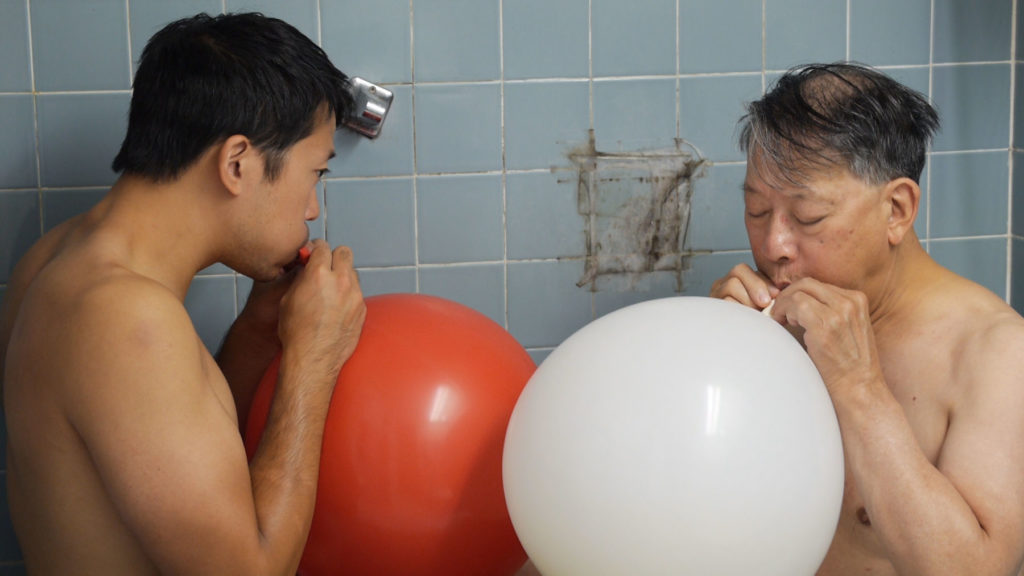Kenneth Tam: Cold Open
Review by Shaonan Xi
Minneapolis Institute of Art
Dec 23, 2017–Apr 8, 2018

Kenneth Tam’s “Cold Open” at the Minneapolis Institute of Art is situated somewhere between performance, video art, and sculpture, where the male viewer is no longer the universal subject who speaks for everyone, but is made to confront the codified construction of his own masculinity. The first video, The compression is not subservient to the explosion; it gives it increased force (2011) consists of a negotiation between the artist and someone he met online, who remains in a cardboard box, unseen and anonymous throughout the video. The title, taken from George Bataille’s Eroticism, oscillates between a scientific rule of physics and the repressed desire for male physical intimacy.
In the video, the (white) man attempts to persuade the artist to let him touch the artist’s different body parts and finally his penis, through holes in the cardboard box. The box remains a constitutive structure of the work, establishing boundaries of desire and visibility, albeit no longer “autonomous” and “independent” but penetrated by the negotiation. The relationship is a constant push-and-pull, but never erupts into a direct confrontation or aggression; it is loaded with erotic tension but denies an ejaculative climax; it is a continual compression without (visible) explosion. The hands of the anonymous man betrays from time to time a racial difference, which suggests the fetishism over Asian male bodies and asks us how masculinities are codified in racial terms. Yet the artist thinks outside-the-box, avoiding any explicit critiques. Tam sustains the negotiation as a continual communication and investigation into these invisible desires, not only exploring what the other man wants, but what he wants for himself. The video made me uncomfortable, not because of the nudity, but because of the forms of intimacy that are raw and outside-the-box and the fluid nature of the video which is neither sterile nor pornographic. It made me reflect on the codes of masculinities, straight or gay, that I have subscribed to uncritically. This moment of reflection for me demands more vulnerability than a sexual encounter would; to share this moment in a dark box with unfamiliar fellow spectators is to a certain extent more intimate than sex. This is perhaps why the exhibition is constructed as a discrete space, where bodies are only illuminated by the screen, both in the video and in the gallery. This tension between me and the fellow spectators is reminiscent of the awkwardness we experience with our parents when an unexpected erotic scene comes on in a film. The second video sump (2015) thus deals with the father-son relationship. In comparison, the second video is more scripted and contained, yet surprising and humorous with its absurd actions. It comforts one’s vulnerability with familiarity, as the title sump suggests, designating “the base of an internal combustion engine, which serves as a reservoir of oil for the lubrication system,” and metaphorically perhaps a place of comfort for the bruised. Yet it at once defamiliarizes this familiar relationship by shedding light on the role of images already at work. In one of the scenes, the artist and his father huddle and gaze at the computer screen together in the dark, erasing temporarily the boundary between the video and the museum room through a mise en abyme. In this constructed space, the artist deconstructs the boundary between actor and spectator, between activity and passivity, and reveals the common issue at stake: the spectacle that has always penetrated human relationships. The artist is no longer an all-knowing master of meaning with immense authority; he only attempts to figure out what he wants during the process. He uses his own body as a sculpture, displaying his own vulnerability and inviting you to do the same. Shaonan Xi
